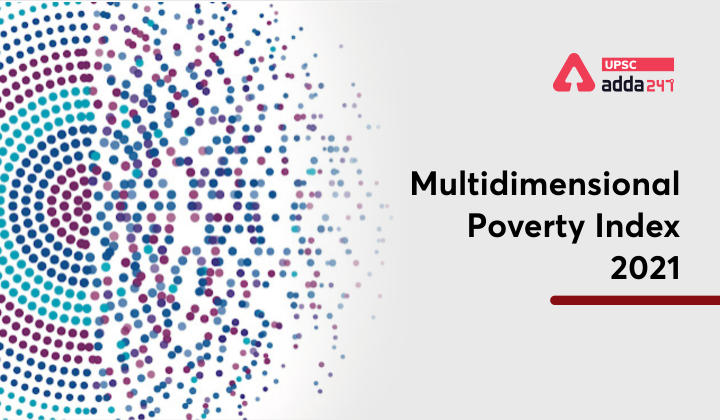Table of Contents
Relevance
- GS 2: Issues relating to poverty and hunger.
Context
- United Nations Development Programme (UNDP) and the Oxford Poverty and Human Development Initiative has recently released Multidimensional Poverty Index to measure poverty by considering various deprivations experienced by people in their daily lives.
Multidimensional Poverty Index indicators

Key findings
On world
- Across 109 countries 1.3 billion people— 21.7 percent—live in acute multidimensional poverty.
- About half (644 million) among them are children under age 18.
- Nearly 85 percent live in Sub-Saharan Africa (556 million) or South Asia (532 million).
- About 8.2 percent of multidimensionally poor people (105 million) are age 60 or older.
- Disparities in multidimensional poverty among ethnic groups are consistently high across many countries and in nine ethnic groups more than 90 percent of the population is trapped in poverty
- In some cases, disparities across ethnic and racial groups are greater than across regions within a country.
The Least Developed Countries Report 2021
On India
- The Scheduled Tribe group accounts for 9.4 percent of the population and is the poorest, with 65 million of the 129 million people living in multidimensional poverty.
- They have the highest incidence (50.6 percent) and intensity.
- The Scheduled Caste group follows with 33.3 percent—94 million of 283 million people—living in multidimensional poverty.
- Overall, five out of six multidimensionally poor people in India live in households whose head is from a Scheduled Tribe, a Scheduled Caste or Other Backward Class.
Global Roadmap to Defeat Meningitis by 2030
Gender based MPI
- Two-thirds of multidimensionally poor people—836 million—live in households in which no girl or woman has completed at least six years of schooling.
- One in six multidimensionally poor people live in female-headed households.
- Women and girls living in multidimensionally poor households are at higher risk of violence because they often face uncertain living conditions and have less financial independence and bargaining power.



 UPSC Eligibility Criteria 2024- Age Limi...
UPSC Eligibility Criteria 2024- Age Limi...
 UPSC Prelims Exam Date 2024, Check New E...
UPSC Prelims Exam Date 2024, Check New E...
 UKPSC RO ARO Result 2024 Out, Download M...
UKPSC RO ARO Result 2024 Out, Download M...







